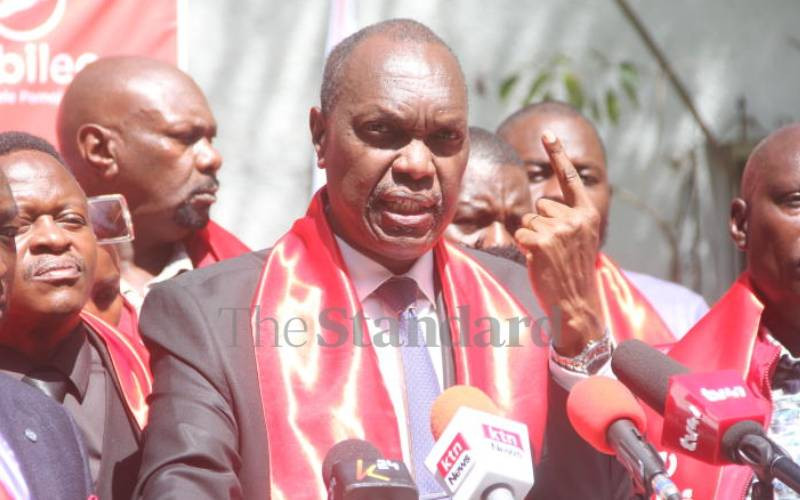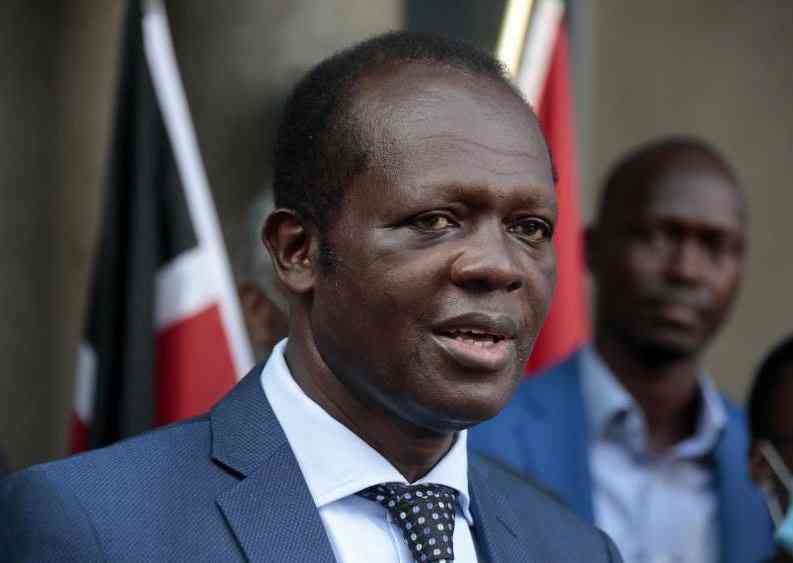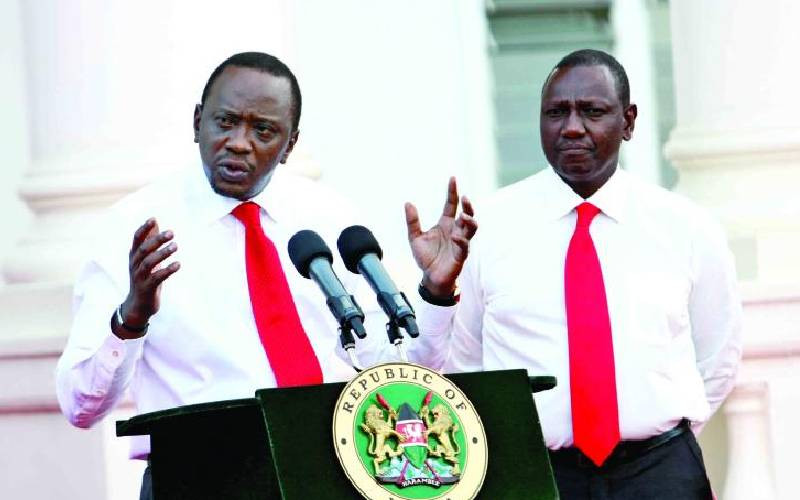Evidently, the allusion to a plot to assassinate Deputy President William Ruto has opened a can of worms. For all purposes and intent, the Jubilee party and the Cabinet are now divided down the middle. Ideological differences between the Tangatanga group of politicians in Ruto’s corner and the Kieleweke group that aligns itself with President Uhuru Kenyatta have deepened.
The emergence of an unverified video clip on social media in which, purportedly, the Jubilee Party Secretary General Raphael Tuju was talking to another person and plotting to block Ruto’s march to the top seat in 2022 frayed tempers.
Attendant to it were demands by Ruto loyalists that Tuju be sacked. Tuju was not in the country at the time and the rules of justice demand that his side of the story be heard besides establishing the veracity of the video clip.
Barely had tempers cooled down than a letter, bearing the name of a Cabinet Secretary, surfaced. The content of the letter, as in the video, is a plot to kill the deputy president. Of course, doubts have been expressed regarding the validity of the letter.
Detectives have turned to the US Federal Bureau of Investigations to help them get to the bottom of the letter. In the meantime, Ruto’s supporters have stuck to their guns; demanding not just the sacking of Tuju, but the resignation of Cabinet and Principal Secretaries adversely mentioned in the alleged plot.
Whereas DP Ruto has not lodged a formal complaint with the DCI, one of the alleged masterminds of the plot against him; Interior PS Karanja Kibicho is reported to have formally lodged a complaint of harassment against Deputy President William Ruto. To muddy the waters, there are those of the opinion that Ruto should resign for the simple reason that most of the Cabinet appears to be hostile to him.
What is not in doubt, however, is that these differences within the Cabinet and the party that forms the Government must be solved pronto. They run counter to whatever efforts there are to build bridges and trust among Kenyan communities. Ironically, the Building Bridges Initiative, borne of the March 9, 2018 handshake between President Kenyatta and Opposition leader Raila Odinga seems to be bearing negative results. First, it caused a crack within Jubilee and that crack has extended to government.
We cannot pretend the country is united when regional leaders exhibit so much animosity towards each other and not even make pretense at civility. It is a no holds barred brawl that threatens to split the country further ahead of what promises to be an explosive 2022 presidential campaign.
We need not go down that path again, especially now that the divisions in government keep bringing back the dark memories of the 2007 general elections.
It does not help that leaders are taunting each other over the dark events.
A Cabinet at war with itself is not good for the country, the economy nor the citizens. Such a Cabinet cannot be trusted to craft policies beneficial to the country, especially if decisions are made under duress in a climate of mutual distrust and suspicion over individual intent.
Kenyans are labouring under the yoke of corruption that should have been taken off their necks, but divisions within government detract its attention and actually create a climate for corruption to thrive.
Dysfunctionality in government and its agencies is a boost for the corrupt.
Kenyans wake up every morning to hopelessness amid a growing cost of living and rising unemployment among educated youth. Insecurity across the country is on the rise, yet the divisions within the Government don’t give Kenyans hope that the ills facing them will be addressed any time soon; not when those expected to offer solutions are disconcerted, looking over their shoulders to see who is trailing them.
At the end of the day, the buck stops with President Uhuru Kenyatta. He must stand up for suffering Kenyans. He must stand up for the Big Four and consequently, his legacy. There are no two ways about it.
Stay informed. Subscribe to our newsletter
 The Standard Group Plc is a
multi-media organization with investments in media platforms spanning newspaper
print operations, television, radio broadcasting, digital and online services. The
Standard Group is recognized as a leading multi-media house in Kenya with a key
influence in matters of national and international interest.
The Standard Group Plc is a
multi-media organization with investments in media platforms spanning newspaper
print operations, television, radio broadcasting, digital and online services. The
Standard Group is recognized as a leading multi-media house in Kenya with a key
influence in matters of national and international interest.
 The Standard Group Plc is a
multi-media organization with investments in media platforms spanning newspaper
print operations, television, radio broadcasting, digital and online services. The
Standard Group is recognized as a leading multi-media house in Kenya with a key
influence in matters of national and international interest.
The Standard Group Plc is a
multi-media organization with investments in media platforms spanning newspaper
print operations, television, radio broadcasting, digital and online services. The
Standard Group is recognized as a leading multi-media house in Kenya with a key
influence in matters of national and international interest.








